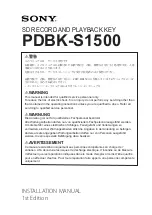System Development and Debugging
MPC885 PowerQUICC Family Reference Manual, Rev. 2
53-8
Freescale Semiconductor
Programming a certain internal watchpoint to generate an internal breakpoint can be done either in
software, by setting the corresponding software trap enable bit or on the fly using the serial interface
implemented in the development port to set the corresponding trap enable bit. External breakpoints can be
generated by peripherals of the system outside of the MPC885 such as an external development system.
Peripherals on the external bus use the serial interface of the development port to assert the external
breakpoint.
In the core, as in other RISC processors, software saves and restores machine state as part of exception
handling. As software saves/restores the machine state, MSR[RI] is cleared. Exceptions that occur are
handled by the core when MSR[RI] is clear and they result in a nonrestartable machine state. See
Section 6.1.5, “Recoverability After an Exception.”
In general, the core recognizes breakpoints only if MSR[RI] = 1, which guarantees machine restartability
after a breakpoint. In this working mode, breakpoints are said to be masked. Sometimes it is preferable to
enable breakpoints when MSR[RI] is clear, despite the risk of a nonrestartable machine state. Internal
breakpoints also have a programmable nonmasked mode, and an external development system can choose
to assert a nonmaskable external breakpoint. Watchpoints are not masked and are always reported on
external pins, regardless of the value of MSR[RI]. Although they count watchpoints, counters are part of
the internal breakpoint logic and are not decremented when the core operates in masked mode and
MSR[RI] = 0.
Figure 53-1
shows the core’s watchpoint and breakpoint support.
Figure 53-1. Watchpoints and Breakpoint Support in the Core
53.2.1
Key Features
The following list summarizes features of the internal watchpoints and breakpoints support.
•
Four I-address comparators supporting equal, not equal, greater than, and less than.
•
Two L-address comparators supporting equal, not equal, greater than, and less than. Includes lsb
masking, according to the size of the bus cycle for the byte and half-word working modes. See
Section 53.2.4.2, “Byte and Half Word Working Modes.”
Development
System or
External
Peripherals
Development
Port
MSR
Software Trap Enable Bits
Development Port Trap Enable Bits
Internal
Watchpoints
Logic
Non-masked Control Bit
MSRRI
Watchpoints
Non-maskable Breakpoint
Maskable Breakpoint
LCTRL2
Breakpoint
to CPU
Counters
Bit Wise
OR
Bit Wise
AND
To Watchpoint
Pins
Summary of Contents for PowerQUICC MPC870
Page 98: ...MPC885 PowerQUICC Family Reference Manual Rev 2 I 4 Freescale Semiconductor ...
Page 118: ...MPC885 Overview MPC885 PowerQUICC Family Reference Manual Rev 2 1 20 Freescale Semiconductor ...
Page 158: ...The MPC8xx Core MPC885 PowerQUICC Family Reference Manual Rev 2 3 18 Freescale Semiconductor ...
Page 288: ...MPC885 PowerQUICC Family Reference Manual Rev 2 III 4 Freescale Semiconductor ...
Page 554: ...MPC885 PowerQUICC Family Reference Manual Rev 2 V 6 Freescale Semiconductor ...
Page 1090: ...UTOPIA Interface MPC885 PowerQUICC Family Reference Manual Rev 2 43 8 Freescale Semiconductor ...
Page 1312: ...Byte Ordering MPC885 PowerQUICC Family Reference Manual Rev 2 A 8 Freescale Semiconductor ...
Page 1336: ...MPC885 PowerQUICC Family Reference Manual Rev 2 D 16 Freescale Semiconductor ...
Page 1358: ...MPC885 PowerQUICC Family Reference Manual Rev 2 D 38 Freescale Semiconductor ...
Page 1370: ...MPC880 MPC885 PowerQUICC Family Reference Manual Rev 2 E 4 Freescale Semiconductor ...
Page 1386: ...Revision History MPC885 PowerQUICC Family Reference Manual Rev 2 I 2 Freescale Semiconductor ...


















